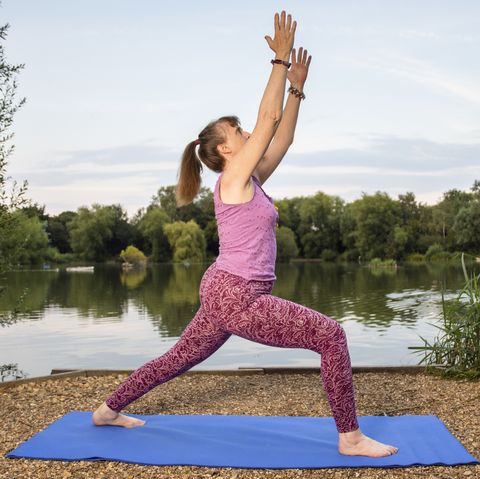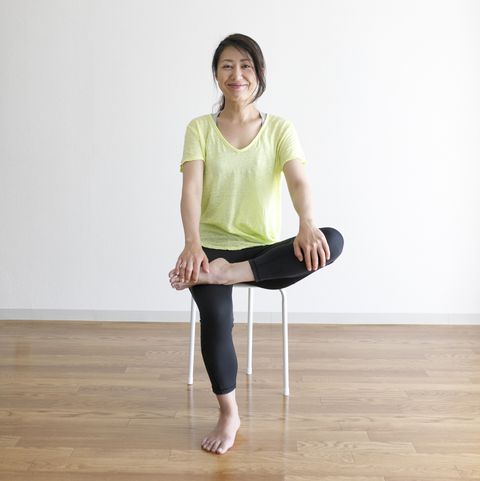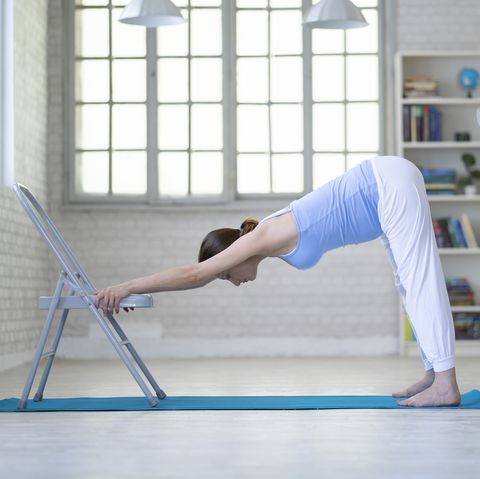From prevention.com By Kaitlyn Pirie
Bonus: It can calm your mind and boost your mood in the process
If you suffer from arthritis pain, you might assume that all types of exercise are off-limits, but that’s not true. In fact, regularly doing yoga stretches for arthritis symptoms can help you feel better both physically and mentally. One study found that yoga may enhance muscular strength, flexibility, and functional mobility in people with knee osteoarthritis while a large review of research shows that it can help improve physical function, disease activity, and grip strength in people who have rheumatoid arthritis.
The key is to do yoga moves that are tailored to your individual needs. Below, certified yoga therapist Steffany Moonaz, Ph.D, the associate director of research at Southern California University of Health Sciences, an adjunct professor at Maryland University of Integrative Health (MUIH), and the founder and director of Yoga for Arthritis, explains why yoga can provide relief from arthritis discomfort—and how you can try a few yoga moves for arthritis at home.
How does yoga help with arthritis pain?
Pain is probably the biggest reason people with arthritis come to yoga —and pain is incredibly complicated. Physically, strengthening the supporting muscles around a joint may increase stability, which may reduce irritation within it. Or there could be nerve pain associated with degeneration—perhaps the spine is pressing on a nerve, leading to sciatica—and yoga may help alleviate it.
Some yoga practices affect the nervous system too. For example, research shows that deep breathing shifts us out of our stress response (which people with chronic pain are often in) and into the relaxation response, and that can reduce pain. There are also pain pathways between the body and the part of the brain where we interpret sensation; yoga may decrease pain by changing activity in those pathways.
Does yoga have mental health benefits as well?
Yes. Arthritis includes more than 100 conditions that can affect just one joint or many. Some, such as systemic lupus erythematosus, are autoimmune inflammatory diseases associated with depressive symptoms.
Plus, living with chronic pain from arthritis can be incredibly frustrating, stressful, and depressing. Fortunately, several aspects of yoga, including the deep breathing mentioned above, can boost mental health. Another approach we use, progressive relaxation, can help calm muscles and our emotional state.
So what’s the best way to start doing yoga for arthritis?
- Check with your doctor. Ask if there are any poses or movements you should be careful about. Then, if you’ve never done yoga before, ideally you want an instructor with experience and training in working with arthritis to guide you one-on-one (in person or over Zoom).
- Find a yoga instructor familiar with arthritis. A yoga therapist has specialized training in working with clinical populations and developing individualized care plans, so that might be a great person to look for if you have movement limitations and/or chronic pain concerns. They can offer specific tips on adapting a yoga practice for your body, which is going to be different if you have, say, rheumatoid arthritis in your hands than if you have osteoarthritis in your knees.
- Pick the right class. After you've taken the steps above, feel free to attend a class and let the instructor know about your condition. When choosing a class, look for descriptions like “gentle,” “beginner,” “therapeutic,” “restorative,” “adaptive,” “accessible,” and “for seniors.” (You don’t have to be a senior to take a gentle yoga class!)
- Take it easy. No matter what, yoga should not make your joints feel worse. Remember that you are the world’s leading expert of your own body. No matter what the instructor suggests, listen to how you feel and adjust be comfortable. Yoga may be challenging, but it shouldn’t be harmful.
How long will it take to feel better?
There isn’t good research that says how much yoga you need to do, but think of yoga as a lifestyle rather than an activity. Proper posture, deep breathing, and morning stretches are things you can throughout the day, and they may help more than if you do one class a week and nothing in between. It could take a month to see physical results, but you’ll likely feel better mentally right away.
5 Gentle Yoga Poses to Try for Arthritis
While working one-on-one with a yoga therapist is ideal, Moonaz recommends trying these poses if you want to try a bit of yoga on your own at home. If something doesn't feel right, don't push it—slowly ease out of the pose and try another one or simply sit still and breathe.

Mountain Pose
Stand with feet hip-distance apart or closer with toes and knees pointing forward. Keep shoulders relaxed over hips and lengthen through the spine so the top of your head is lengthening upward and arms rest at your sides. Find a focal point at eye height and allow the breath the deepen. Notice the weight evenly distributed between both feet and from toes to heels. Stand in this posture whenever you need to feel grounded, to calm your mind, or to reset your day.
Warrior I
Start in Mountain Pose, holding a chair for support. Step one foot back a few feet, angling the back toes out slightly but keeping the hips squarely facing forward. Bend the front knee into a lunge, making sure the front knee doesn’t bend past the ankle. Keep your shoulders over your hips and the gaze forward. Bring hands to hips, shoulders, or up overhead if you feel stable, or keep one hand on the chair for safety. Take five full breaths and repeat on the other side.




No comments:
Post a Comment